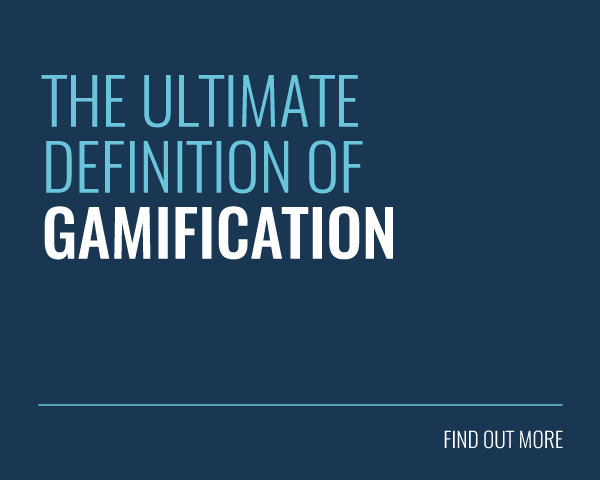
Gamification gives employees the motivation they need to achieve learning objectives, but only if it has all the essential ingredients. In this article, I’ll share 8 elements that may be missing from your gamified online training course.
What May Be Missing From Your Gamified Online Training Course
Rewards may fuel employees’ drive and prompt them to actively participate, but it’s not all fun and games. There are some crucial components you need to include in your gamified online training course to ensure that corporate learners focus on the goals instead of being distracted by the incentives. Otherwise, you may end up reinforcing the wrong behaviors or providing nothing more than entertainment value. Below are 8 elements that are quintessential for a winning gamified online training course.
1. Clear Instructions Or Guidelines
Employees need to know how to play the ‘game’ and what’s expected of them throughout the online training experience. For example, what they must do to earn badges and how the game mechanics tie into the overall training objectives. You should also clarify how their progress will be evaluated and the reward-based criteria, such as which online training activities they need to complete to get a badge or the minimum assessment score to advance to the next level of the gamified online training course. Cover all the basics up front so that employees know the ground rules and can focus on their training instead of trying to figure out how to participate.
2. Aesthetically Pleasing Rewards
Badges, leaderboards, and other incentives should be visually appealing. After all, employees work hard to earn rewards and should have something to show for their achievements. This rule also applies to the layout of your gamified online training course. For example, pick a theme that aligns with the subject matter and learner interests, such as a game show wherein employees must earn points to reach the bonus round. Many rapid eLearning authoring tools also have built-in online asset libraries that you can use to design personalized rewards.
3. Real-World Context Or Purpose
Incentives are only truly effective when they tie into real-world benefits. For instance, earning a badge may seem like an empty victory if it doesn’t translate into a practical application, such as increasing sales or on-the-job productivity. Thus, one thing that may be missing from your gamified online training course is context. Explain how the online training course relates to their work responsibilities and why they should strive to earn incentives. Be specific and make it personal.
4. Immediate Feedback
It’s not enough to simply give employees a badge or move them one spot up the leaderboard. You need to provide them with immediate feedback so that they know what to work on and where their strengths lie. For instance, they failed to earn the maximum number of points after the simulation because they missed a crucial step or were unable to demonstrate a certain skill that’s vital for their work responsibilities.
5. A Compelling Story
Gamification requires a common thread to tie all the elements together. Otherwise, it may seem like a fragmented collection of random rewards or mechanics that lack purpose. Use a story as a foundation for your gamified online training course so that employees can make an emotional connection. As an example, introduce a main character at the beginning of the online training course to whom employees can relate. Share their challenges and a brief bio. Then invite corporate learners to collect objects throughout the online training course to help the protagonist achieve his goal. Just make sure that your story doesn’t steal the spotlight and that employees still focus on the learning objectives.
6. Progress Checks
One of the main benefits of incorporating game mechanics into your eLearning course design is that employees can monitor their own performance. You must give them the opportunity to keep a close eye on their progress and identify areas for improvement. For example, instead of merely offering badges, create a personal badge board. Every time an employee earns a new eye-catching reward, it appears in their collection to show how far they’ve come. You can also integrate a progress bar or maps that fill up as they advance levels or earn more points.
7. The Right Game Mechanics
Some employees may prefer badges that allow them to acknowledge their own accomplishments privately while others gravitate toward more competitive mechanics, such as leaderboards that pit them against their remote peers. You must choose rewards that not only cater to learner interests but also reinforce favorable behaviors. Research your audience to determine which game mechanics suit their needs. It’s also wise to conduct a training needs analysis to figure out which gaps need to be filled.
8. Intrinsic Motivation
Ultimately, gamification should serve as a bridge between extrinsic and intrinsic motivation. Employees earn rewards that fall in line with business goals, which prompts them to actively participate until their internal drive kicks in. However, many gamified online training courses are missing this crucial element. They focus so much on achieving the next incentive, that employees lose sight of the most important prize, which is to be more productive in the workplace and expand their knowledge. Gamification should never be a crutch that employees rely on but the catalyst that encourages them to perform at the top of their game. Emphasize that the learning objectives are the top priority so that employees understand the purpose behind the game mechanics.
Is your gamification strategy achieving the desired outcomes? Does it give employees the recognition they’re looking for and encourage them to fulfill their potential? Are you getting the best returns from your online training program and improving retention rates? If not, you may want to back to the drawing board and incorporate these missing elements. You might also consider investing in a rapid eLearning authoring tool to save time and resources. For example, one that features a vast online asset library that makes badge design a breeze.
Are you sure you know the difference between gamification and game-based eLearning? Read the article Gamification vs Game-Based eLearning: Can You Tell The Difference? To learn about the distinct differences between the two, and discover some useful tips on how to design an effective instructional strategy for each.
 About Christopher Pappas
About Christopher Pappas
Christopher Pappas is founder of The eLearning Industry’s Network, which is the largest online community of professionals involved in the eLearning Industry. Christopher holds an MBA, and an MEd (Learning Design) from BGSU.
eLearning Blogger | EduTechpreneur | eLearning Analyst | Speaker | Social Media Addict








